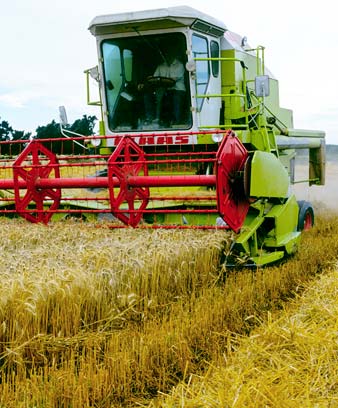Story summary
Why farmers use machinery
Farmers use machines because it makes farm work faster and easier, and fewer people are needed to do the same amount of work. As machines have become better, farms have grown bigger and can produce more.
Some machines used on farms were made in New Zealand, but many have had to be imported from overseas.
Machines powered by humans and animals
The very first farm machines needed human power to work. They included spades, axes, foot ploughs, butter churns, and hand pumps for spraying crops.
Horses and bullocks pulled ploughs and machinery for sowing and harvesting crops.
Steam-powered machines
From the 1860s steam-powered machines were used to separate grain from straw, and from the 1880s steam traction engines with wheels pulled ploughs and transported animals or produce.
Machines powered by wind and water
Wind and water were both used to power machines such as pumps and electricity generators.
Engine-powered machines
From the early 20th century oil or petrol engines powered machines for milking cows, shearing sheep, spraying crops and running chainsaws.
Farm vehicles
From 1904 tractors began to replace horses for pulling ploughs, seed-planting machines, and harvesting machines.
Trucks began to be used in the 1920s and 1930s for carrying milk and other farm produce, and transporting animals.
After the Second World War farmers used planes to spread fertiliser on steep land, drop poisoned bait for rabbits and carry building materials. Later, helicopters were also used.
Since the 1970s, many farmers have used motorbikes and quad bikes to get around their land quickly and shift materials.
Electric and electronic machines
After electricity became more widely available, from the 1920s, farmers used many machines that ran on electric power, such as milking machines, water pumps, shearing machines and electric fences.
In the late 20th century, electronic machinery was invented for jobs like weighing animals and controlling how much water crops get. Computers became important for keeping farm records and communication.





